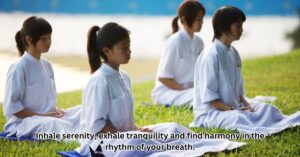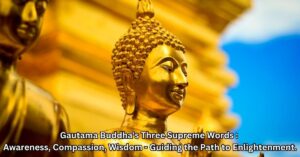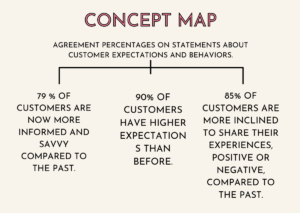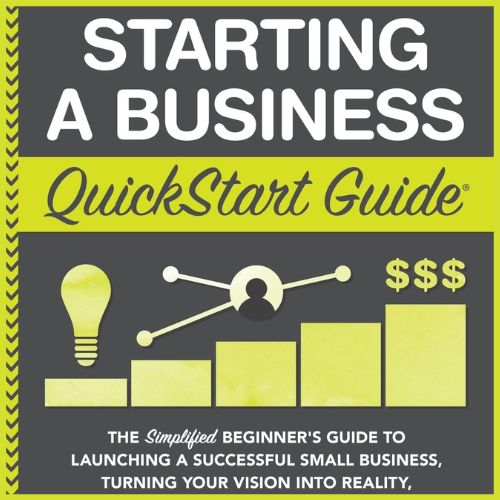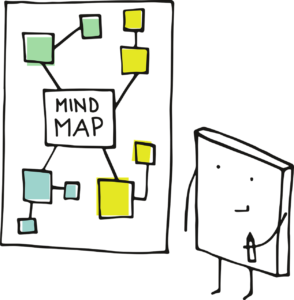What do we need to understand here? Whether it’s a girlfriend’s phone or a boyfriend’s phone right now, our personal devices have grown to collect a collection of our memories, discussions, and private moments in this age of smartphones and digital connectivity. What kind of data we feed into our phones depends on us, and it depends on our personalities and how we live our lives. As our relationships in our personal lives grow and deepen, questions about trust and privacy can always naturally arise, leading some individuals to consider whether it’s appropriate to ask to look at their girlfriend’s phone. This article explores the nuances of this topic. This article highlights the value of trust, privacy, and open communication within the framework of a partnership.
The Importance of Trust in a Relationship
Building Trust: A Fundamental Pillar
I have a serious query for everybody. You should give this question some serious thought as well. Tell us your expected age now.? Will you have complete trust in your ability to say this? Who among you knows? Tell me how many more years we’ll live, if I live 10 years, 20 years, 30 years, 50 years, 80 years, or 100 years.
But I must admit that I’m very sad to say it. No one has an answer for this. As you can see, this is a really straightforward query. And although it appears pretty common, we frequently overlook such little things. Although the issue is minor, we are unwilling to comprehend it. We frequently don’t know where we are headed or where our lives are headed. Is it better for us? If not, what is it? Sometimes we just don’t care.
But hold on, my dear friends, no matter what stage of life you are in, you must pause and reflect once with an open heart and mind. Are you sure that nothing goes wrong in your personal life? You cannot tell that something is wrong. You still choose to ignore that point and keep on committing errors. If a mistake is made once in life and is not allowed to happen again, nice things should be used to make up for it. The error is no longer a mistake. Similarly, if you keep making mistakes, eventually someone’s house will start to burn, and we will have to put other flammable fuel on it in place of water.

If you develop such negative things in yourself, then sometimes it may happen that you even burn your own house. Think carefully; any negative thing first develops in your mind, so the first loss will also be yours. First of all, you will be affected by such negative things; later, someone else will be.
Similar things happen in our personal lives. We asked you a question above. That we do not know how long we are going to live our lives. No one knows this. And if we do not know for how long we will live on this earth, then why do we add complications to this small life? Why do we keep the person who loves us wholeheartedly in deception? Because we often ignore the positive things in our lives.
We do not know when, where, or at what time you are reading this article; we do not know you. We don’t know anything about you, but we know this much for sure: you may be someone’s girlfriend, you may be someone’s boyfriend, you may be someone’s future wife, you may be someone’s future husband, you may be in a live-in relationship with someone, or you may be in a long-distance relationship with someone.That’s what we know for sure about you. Now you just think that you love someone very much. But then why do we destroy this beautiful life of ours because of small things?

Is it something that your Girlfriend, boyfriend, wife, husband, or whoever you are in love with doesn’t have? What do you feel is lacking in that relationship? Why do you want to have a relationship with another person? You have to start thinking from here first. The human body is generally the same. Just here, there is a color difference. Some are artsy, some are fair, some are handsome, some are less handsome, some are less tall, and some are taller. But after all, finally, you have liked the one you love; that’s your choice, the one you are emotionally attached to, right? You have to think about this. You have to be loyal to yourself first in this small life. You have to ask yourself, Am I doing something wrong in our relationship? If you are loyal to yourself first,
If you start feeling guilty during a mistake made in a personal relationship, if you have really made a mistake, and if you yourself accept your mistake, then understand that you are going to step in the right direction. If such a change is developing in you, then understand that from now on you will have no chance to make a mistake in a personal relationship. When we love a person, we also think that we have to maintain that relationship for the rest of our lives, under any circumstances. And if this thing naturally comes inside you, then it is even better. This thinking of yours can change your life.
The Role of Transparency
You have read the headline of our article. Is It OK to Ask to See Your Girlfriend’s Phone? 7 Reasons. But we will say this again: whether we have our girlfriend, boyfriend, wife, or husband, when do such things get created? These things were created because we do not trust each other anymore.

Transparency is an integral part of building trust. Openly sharing experiences, feelings, and even challenges fosters a sense of emotional intimacy. Transparency communicates a willingness to be vulnerable and authentic with one another.
When both partners are transparent, it encourages open communication, reducing the likelihood of misunderstandings or assumptions. Trust and transparency form a powerful duo that fortifies the emotional connection in a relationship.
Understanding the Boundaries of Privacy
The Right to Personal Space
It’s critical to acknowledge and respect each other’s personal space in any relationship. Privacy is a normal aspect of being an individual within a partnership rather than an indication of concealment or deception. Respecting this boundary demonstrates your respect for and confidence in your partner’s independence.
People can keep their independence and feeling of self by establishing personal space. It allows people the liberty to have private ideas, experiences, and moments. Respecting these restrictions makes the bond even stronger.
Don’t limit yourself to asking for Your Girlfriend’s Phone? you need to be aware of all aspects of your relationship. You must view this video.
Individual Autonomy
Both people should feel safe and at ease in a loving relationship while keeping certain aspects of their lives private. Mutual trust and emotional safety are fostered by respecting one another’s boundaries. Requesting access to Your Girlfriend’s Phone may be perceived as an intrusion on her privacy, which could leave her feeling uneasy or untrusting. Instead, concentrate on establishing trust by being truthful with her and showing that you value her independence.
Communication and Openness
Creating a Safe Space for Communication
An productive partnership must have a friendly environment that encourages honest communication.
Both partners can express their feelings, thoughts, and worries in safe areas without worrying about being judged or criticized.Open builds emotional connection and promotes a better understanding of one another’s wants and feelings. You can respectfully discuss any questions or concerns by being transparent with one another.
Feelings and Concerns Expression
Feelings and Concerns Representation is very important to discuss your feelings and concerns with Your Girlfriend if you ever feel unclear or unhappy about something in your relationship. However, instead of directly asking to see her phone, focus on discussing your emotions and experiences.
Engaging in open conversations helps build trust and empathy. Sharing your feelings and concerns allows your partner to understand your perspective and demonstrate support and understanding.
The Risks of Privacy Invasion
Trust violation and emotional harm
Your relationship may suffer if you snoop on your partner’s phone or otherwise penetrate her privacy. It’s possible that the trust you two have put in so much time and effort to establish may be violated. Given its weakness, trust can be difficult to re-establish. Respect your spouse’s boundaries and her privacy to demonstrate your reliability.
Asking to See Your Girlfriend’s Phone Absolute rubbish.

Observable Effects of Spying
Snooping through your partner’s personal device can lead to feelings of betrayal, hurt, and emotional distress. It sends your spouse the message that you don’t believe in them, which could cause them to become irate or cause a communication breakdown.
Instead of resorting to invasive actions, foster open communication and address any concerns or doubts through healthy dialogue.
Managing Tough Conversations
Timing and Environment: A Careful Approach
Think about the timing and environment of the conversation before bringing up asking to See Your Girlfriend’s Phone? Select a quiet, private setting where you both feel free to express yourselves without interruptions.
Make sure your partner feels free to express her feelings by creating a comfortable environment. Approaching the dialogue with empathy and understanding is crucial.
Considering each other’s thoughts
Be prepared to grasp Your Girlfriend’s point of view and enter the conversation with an open mind. Actively listen without defending or accusing others.
Make an effort to comprehend her experiences and feelings while displaying empathy. You might discover points of agreement and create a stronger emotional bond by paying attention to what the other person is saying.
Creating Trust and Understanding
The basis of trust and understanding is necessary for developing a solid and lasting connection in every meaningful relationship. Over time, trust is developed via dependable behavior, honesty, and unrestricted communication. It entails being reliable, taking responsibility, and showing sincere concern for your partner’s feelings and well-being. On the other hand, understanding includes paying attention to your partner’s ideas, emotions, and experiences without passing judgment. It entails understanding their viewpoint and approving of their feelings. In order to build trust and understanding in a relationship, one must be patient, sensitive, and open to sharing feelings. Partners may create a safe and secure environment where both people feel valued, respected, and supported by putting these factors first.

Put Open Communication First
Open communication is a powerful technique for building trust and emotional connections. Be patient and attentive during conversations, and stay clear of anything that can make it difficult to actively listen. Since it supports the development of couples’ emotional bonds, open communication is advised.A successful relationship is built on the foundation of open communication. It entails openly and honestly communicating with your spouse about your feelings, thoughts, and worries. Putting open communication develops a stronger sense of trust and closeness as well as a deeper emotional connection. Together, partners may overcome obstacles, freely share their frailties, and rejoice in their successes. Creating a safe and judgment-free environment is essential if both sides are to feel at ease expressing their points of view. The keys to fostering open communication include active listening, empathy, and respecting your partner’s viewpoint. Couples can forge stronger ties, handle conflicts skillfully, and cultivate a partnership based on respect and understanding by prioritizing open communication.
An actual case study.
Identify what love is. soon after marriage.
Mine was an arranged marriage, like most of the Indians. Before marriage, I spoke to her only a couple of times because our marriage date was 3 months after we met formally and also because we were both busy with work and preparation for the big day.
On our big night, it was two strangers in a room. I knew more about my watchman than my wife. We didn’t do anything on that night since we were strangers and very tired of the long rituals from our marriage.
A couple of months after marriage, it was suffocating for both of us. We tried to change for each other, but it made it worse. There were a lot of differences between us.

- While I am an introvert, she was an extrovert.
- I have fewer friends; she had a ton of them.
- She will be on the phone the majority of the time while I rarely ever pick up the phone and only ever receive calls from my parents and, more frequently than them, credit card companies.
- I like staying indoors, and she likes going out and shopping (I hate shopping).
- I like to be with my family and relatives; she spends her time with friends and hates spending time with relatives.
- She is a Coffee person; whenever she is free, one can find a coffee mug in her hand. I don’t drink coffee or tea.

- I have a kind of OCD where I don’t have any unread emails or messages, even when I open spam or add emails. Once, I happened to catch a glimpse of her office laptop screen, and she had 500+ unread emails.
- She likes to read a lot; she hasn’t seen the GOT series but has read all the books. Most of the time on the weekends, whenever she is at home, I can find her on the balcony of our room reading something. I, on the other hand, don’t like to read much; on weekends I’ll be on my bed with my laptop on my chest binge-watching anything and everything.
- I am sluggish; she is very active.
- She loves driving, be it a car or a Motor Bike. I, on the other hand, still don’t know how to drive a Motor bike.
- She spends a lot, and I am kind of a savings person who rolls his toothpaste tube till there is no toothpaste left.
- She travels to the office in a cab; I used to take the bus.
- She has a very good dressing sense; I just need a shirt and pants, and I’ll manage till it tears if I have to. But I still try to dress well because of society. She is like, who cares? It’s my life attitude.

- I never get into fights because it’s a waste of time and energy, even when it’s not my fault. She’ll fight if someone wrongs her.
- I hate cooking but love to clean. I always want everything in order; she hates cleaning (She is the mess maker in the house) and used to cook food better than my mom.
- She loves dogs, and I hate those monsters (I have a bad history with dogs).
- She is a fitness freak; she eats healthy, goes to the gym every day, and is also good at sports. I go to the gym whenever I feel like my stomach is getting big,
- I eat whatever is considered food, and I am also good at sports that I play on my Xbox. And the main thing is that she is vegetarian, and I am not. I eat chicken every day.

All this difference may feel trivial or small (Even though we taught we could handle it), but it was not for us. We tried to change for each other, but it felt like suffocating trying to be someone we were not. This caused frustration and stress in our lives. Every day, we were unhappy. Marriage was turning out to be a prison for us. The only thing we had in common was that we both thought our marriage was suffering and didn’t want that to happen. Sometimes we used to argue and fight because of this. I regret marrying her.
One day, we stopped trying to change for each other and stayed the way we wanted. It was like staying with a roommate. We did what we liked and didn’t expect anything from others. After this, the suffocation was no more. We could breathe again. In time, we kind of got used to each other.
Six months down the line, I got an offer to work abroad for six months for a project. She was happy for me, and I left.
I never thought that I would miss her, but I did. I missed her talking to her friends over the phone. I missed her food. No one was there to make a mess. When I get back from work, no one will be in the house.
Every day, I used to call her. The call would last for 10 to 15 minutes with basic questions like Hi, how are you?’, ‘How’s work?’, ‘How’s everyone there?’, and What’s going on?’. Every day, I used to call her at the same time. She used to avoid calls from others during this time. I would be worried if she didn’t pick up the call. Then I used to call my parents to check in on her.
I missed her a lot. I realized I am in love with her, and I thought it was only from my end, and she doesn’t feel the same about me. So I kept quiet.
I was about to return to India. I informed her the same; my flight was supposed to reach around 2 a.m. in the morning, so I told her not to wait for me since I had a key with me.
I reached around 2:30 a.m. When I came out of the airport, I was surprised to see her waiting for me outside the airport. Her face lit up like a Christmas tree when she saw me. She came near me. I could see her eyes filled with tears and a big smile on her face. I knew then that she also loved me. She hugged me and said she missed me.

Now I don’t regret my marriage. She is the perfect one for me.
We didn’t expect change from each other. Just love the way we are.
I only wish that we had spent some time together before marriage so that we didn’t go through what we did during our initial days.
The short conclusion of the actual case study
Friends, we hope this real story can bring a positive change in your life. There may be many things in our lives that we do not like. When we meet anyone, we talk to them. It is inevitable that we have similar thoughts. And our habits also cannot be exactly the same.

For the time being, it would be better to give each other time to understand each other by thinking a little calmly rather than creating estrangement over anything. Create understanding for each other. If you have been with us in reading this article, then you must have understood that we have given you answers to almost all possible questions. We wish that your life is always full of happiness. and “Is It OK to Ask to See Your Girlfriend’s Phone? 7 Reasons”: “There should never be a need to think about the article’s heading.
Conclusion,
Is It OK to Ask to See Your Girlfriend’s Phone?
This question itself takes us to a very difficult topic. It will be difficult to say what kind of turn this question will bring in your personal life. It completely depends on the current relationship between you and your partner. Everyone may have their own different circumstances. Please understand here at your discretion. Any effective relationship must have open communication, trust, and respect for personal space. Focus on developing trust through open conversation, compassion, and respect for each other’s limits rather than trying to violate private. A relationship that is built on trust and understanding will succeed, enabling both partners to experience a sense of worth and love.
FAQs,
Q: Is it ever appropriate to ask to see my Girlfriend’s Phone?
A: While it’s natural to be curious in a relationship, it’s essential to respect your partner’s privacy and personal space. Instead of asking to see her phone, focus on building trust through open communication and understanding. Trust is nurtured through honesty, empathy, and respecting each other’s boundaries.
Q: How can I address concerns without snooping?
A: Expressing your feelings and concerns openly is key to a healthy relationship. Create a safe and non-judgmental space for honest conversations with your partner. By communicating openly, you can navigate challenges together and strengthen your emotional connection.
Q: What if I feel insecure about my partner’s phone usage?
A: It’s normal to experience insecurities, but addressing them with your girlfriend is essential. Talk openly about your feelings and emotions, allowing her to understand and support you. Remember, trust and communication are the foundations of a strong relationship.
Q: How can we build trust in our relationship?
A: Trust is built over time through consistent honesty, transparency, and open communication. Be reliable and accountable in your actions, and show genuine care for your partner’s feelings. Building trust requires patience, understanding, and demonstrating your commitment to the relationship.
Q: Can respecting privacy strengthen a relationship?
A: Absolutely. Respecting your partner’s personal boundaries shows that you value and trust their autonomy. It fosters a sense of security and emotional intimacy in the relationship. By respecting privacy, you reinforce the foundation of trust and strengthen your bond with your partner.





























